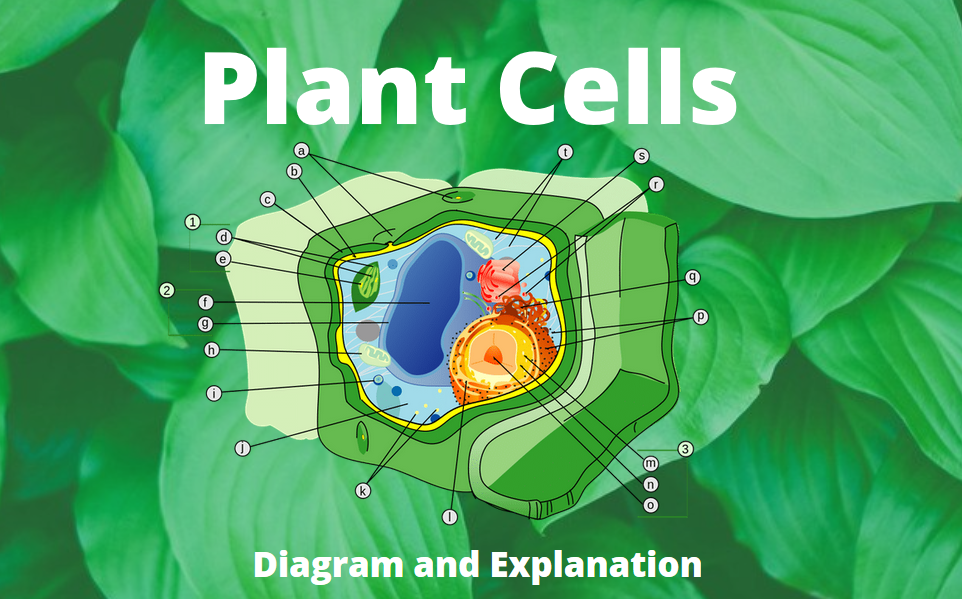
Plant cell parts each have their own function, from the cell wall to the chloroplast. The unique plant cell has similar parts and functions to an animal cell but a few distinct differences. Notably the presence of a more rigid cell wall and the modification to photosynthesize which requires chloroplast.
Plant cells are eukaryotic cells, which include fungi and animal cells as well. Plant cells are unique among eukaryotic cells because they are capable of creating their own food.
“A dried plant is nothing but a sign to plant a new one.” — Priyansh Shah
This is because a plant cell contains all the vital components it needs to function and maintain its particular structure and survive.
The Cell Wall
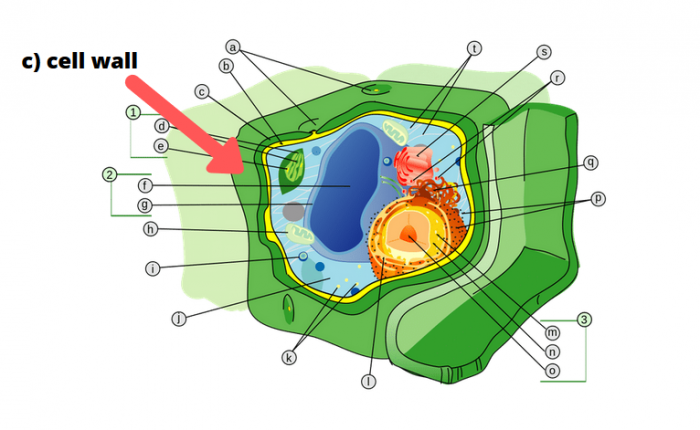
Plant cells are generally larger than animal cells and are also less mobile. Plant cells are very rigid because of their cell wall, a component that does not exist within animal cells. The plant cell wall was inherited from our prokaryotic ancestor and became a highly specialized part of the cell. The rigidity comes from a complex series of cross-linked structures made of cellulose and lignin that reinforce the wall.
The structure of the plant cell is also aided by microfilaments. These are rods of actin, a globular protein, that act as structural components of the cytoskeleton, helping to keep the cell’s shape.
Besides providing the structure, strength, and rigidity of the cell, the cell walls are also porous and allow the movement of materials into and out of the cell. These channels are regulated to ensure that harmful compounds are kept out. Plants tend to look similar because the rigidity of the plant cell does not allow it to develop into a diverse array of cells, which is something that animal cells can do.
The plasma membrane, found in all living cells, encloses the plant cell and is surrounded by the cell wall. In plant cells, this membrane adds an additional layer of protection and regulation to the cell wall.
The Vacuole
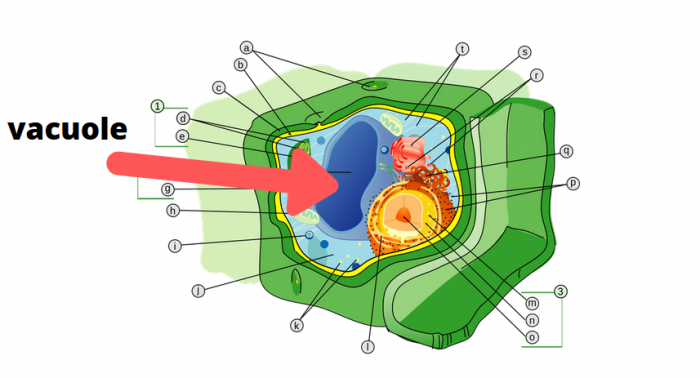
Vacuoles are the largest organelle in the plant cell and are made of membrane-bound sacs within plant cells. They are generally about 80% of the plant cell’s interior space. Their main purpose is to support the cell’s structure by ensuring that it does not collapse. Their size allows them to counteract any forces that might cause the cell to distort.
The vacuoles become so large because it absorbs smaller vacuoles over time as the plant grows. Besides being important for structural integrity, the vacuole has other functions. They also act as a storage area as some plants store pigments, proteins, or even waste. If they store waste, they generally also contain enzymes to break it down.
The vacuoles can be used as a defense because they can contain toxic chemicals or deterrents when consumed, which would hopefully deter future animals from eating them.
The Chloroplast
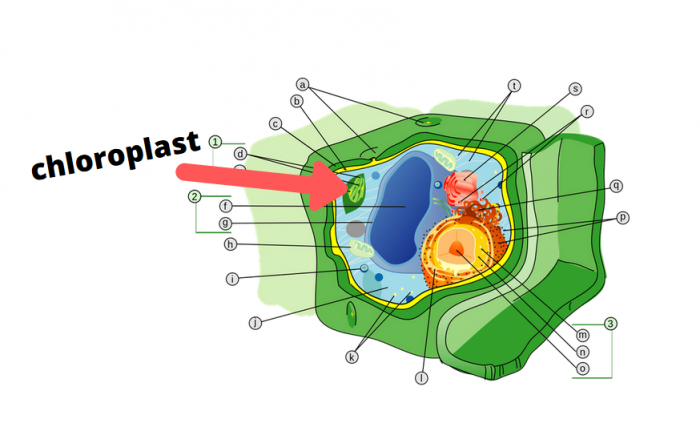
The chloroplast is one of the most important parts of the plant cell and is crucial to its function. As is commonly known, plants use photosynthesis to harness the power of the sun to create nutrients. The sunlight is used to turn carbon dioxide and water into sugar and oxygen, a waste product. The sugar is then used to create energy compounds needed by the cell.
The chloroplast is similar to the mitochondria because it is an energy creation center and also an enclosed structure with its own DNA. While plants also have mitochondria, they primarily use the chloroplast to create energy.
The green color of plants comes from chlorophyll, which is a pigment give plants their green color and is capable of absorbing sunlight, which is crucial for the process of photosynthesis. The chloroplast is generally concentrated in the leaves of a plant.
The Nucleus
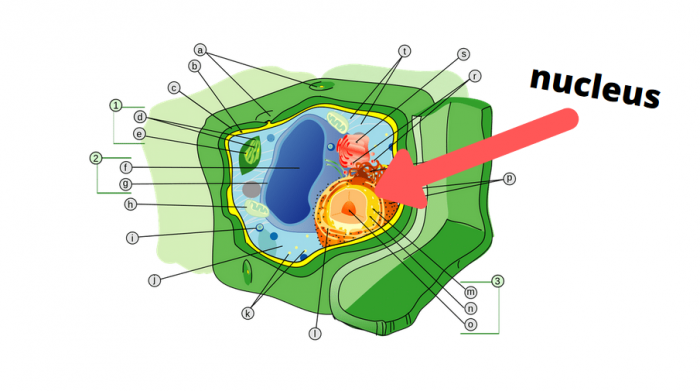
The nucleus is also an important part of the plant cell. It is also an important part of all eukaryotic cells. The nucleus contains the DNA of the plant cell, which is used to derive all its functionality and structure. It is like the brain of a plant cell that handles the admin and information processing of the cell.
The nucleus is enclosed in an envelope that is tightly regulated with nuclear pores that are strict on what it allows in and out of the nucleus. From the nucleus, growth, metabolism, protein synthesis, and reproduction are all regulated to ensure the cell remains functioning. The ribosome is made in the nucleus.
The Ribosome
Every living cell contains ribosomes because they are crucial to a cell’s survival. Ribosomes are considered an organelle because of their abundance and importance. They are made up of ribosomal RNA, which is a translated version of a part of DNA, and protein. They are responsible for the production of proteins in a cell. The ratio is usually about 60% rRNA to 40% protein.
Ribosomes are found throughout the cell but are generally concentrated around the endoplasmic reticulum and the nuclear envelope. They can range from the thousands to the millions.
The Endoplasmic Reticulum
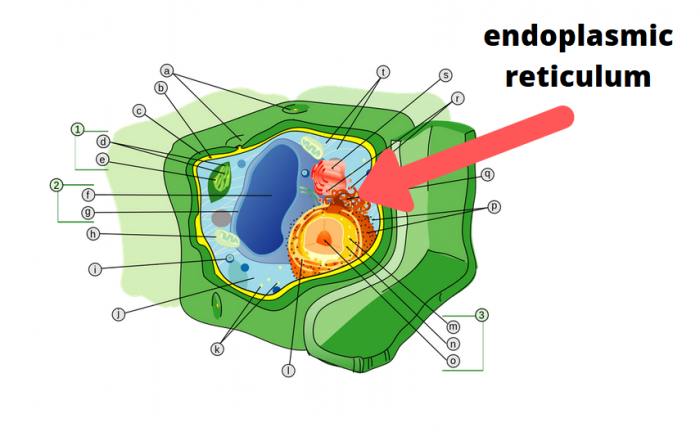
The endoplasmic reticulum (ER) is a network of sacs and tubules that form a complex structure with internal space. The endoplasmic reticulum is present in eukaryotic cells and functions as a central hub for the manufacturing, processing, and transporting of many different kinds of compounds that a cell might need. These can include proteins, energy compounds, and nutrients.
It is located near the nucleus and surrounded by ribosomes. It also connects to the cytoplasm as it acts as a pipeline between the nucleus, ribosome, and cytoplasm.
The endoplasmic reticulum exists as the rough ER and the smooth ER. The rough ER is rough because it is surrounded by many ribosomes and assists the ribosome in the synthesis of proteins. The smooth ER lacks ribosomes and has multiple functions. The smooth ER is an exit point for many of the things moving through the rough ER. The smooth ER is also where fats are produced and toxins are detoxified.
The plasmodesmata are small tubes that connect plant cells to other plant cells and it connects the ER to those other plant cells as well to aid in transport beyond the plant cell.
The Golgi Apparatus
The Golgi apparatus is found in both animal and plant cells. It is composed of a network of membrane-covered sacs called cisternae that look like deflated balloons. It is located near the nucleus and functions as the finishing center of the cell. It finishes modifying proteins and fats from the ER and prepares them to be sent out to other parts of the cell or even outside of the cell. The proteins arrive in vesicles from the ER and leave in vesicles from the Golgi as they move between the different parts.
The Cytoplasm
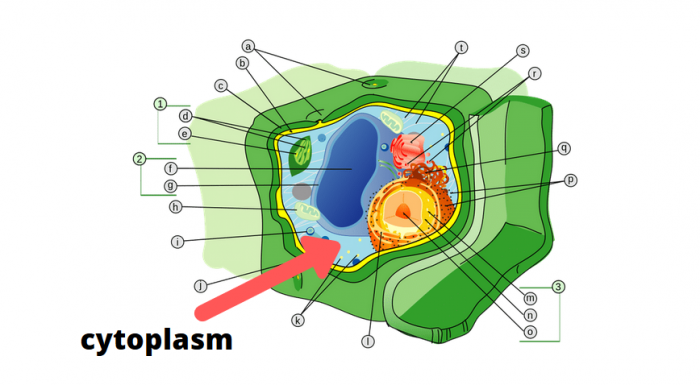
The cytoplasm is a liquid that fills the cells and houses the organelles or surrounds those that enclosed. It contains enzymes that help to regulate the movement of vesicles and other compounds as they move between other organelles or between cells.
Like the vacuole, the cytoplasm is important for the shape and structure of the cell. It helps to keep the other organelles in their place and helps material move easily between them. the cells would become misshapen is the cytoplasm did not fill the cell, which would lead to many problems including transport of compounds.
The cytoplasm also contains microtubules, which are hollow cylinders. These microtubules assist in transport as well as helping to maintain the structure of the cell.
The cytoplasm is the home of the peroxisome. Peroxisomes are spherical organelles that contain enzymes used to break down toxins that hurt the cell. They are found throughout the cytoplasm.









